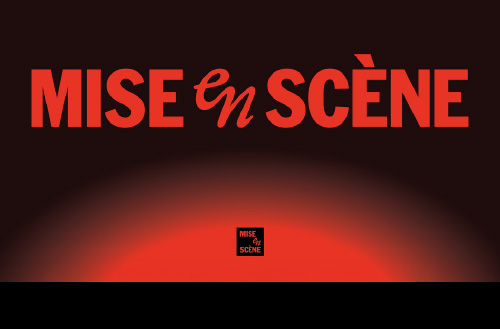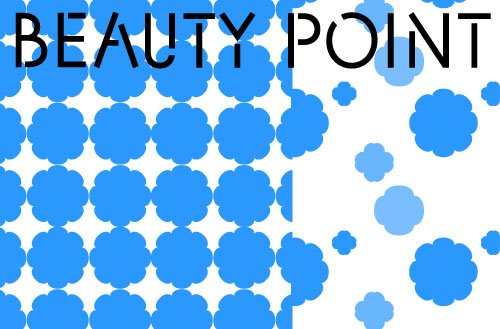
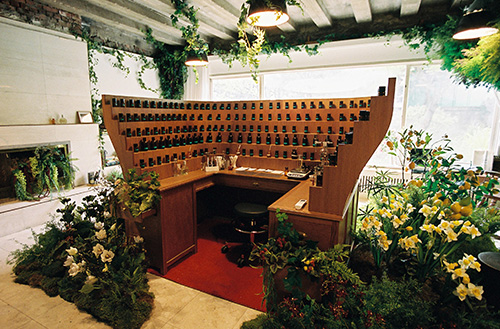
The Bukchon Perfumer House Exhibition

Written by
Jung Soo-min Next Space Team

The Bukchon Perfumer House exhibition is nearing its closing. Because the specifics of the exhibit are available on-site and through various media, I would like to share with you how we came to plan the story of ‘Amorepacific's Fragrance,’ and the thoughts and joys that accompanied it.
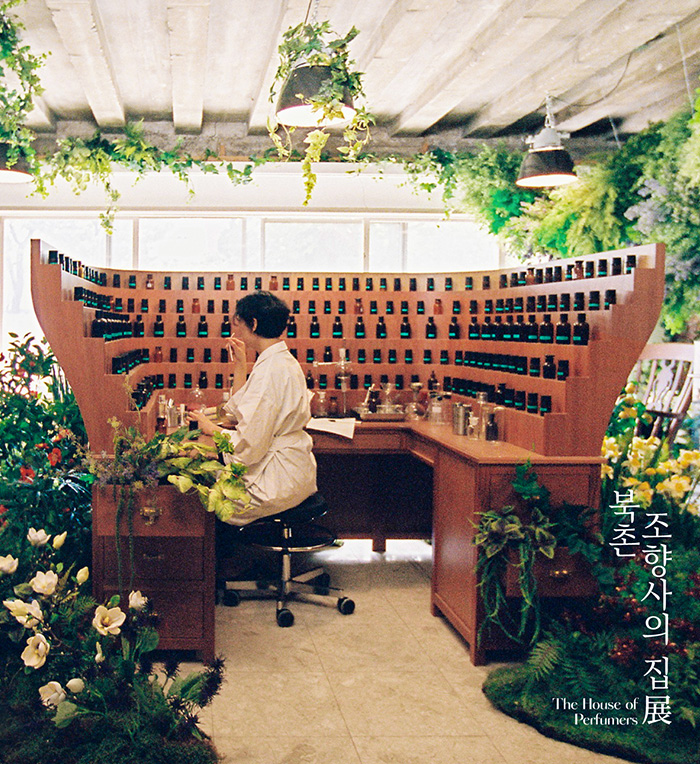
Our Own Story
What is fragrance? During the past year, as our team operated the exhibition platform Story A, we received much love for exhibitions of brands like Long Take and Happy Bath that emphasized fragrance. We knew the public's interest in fragrance was growing, but the exhibition reviews and surveys opened our eyes. Requests like ‘Please create an exhibition related to fragrance’ and ‘Please create an exhibition where we can blend fragrances’ made us realize that fragrance must be a central theme in next year's exhibitions.
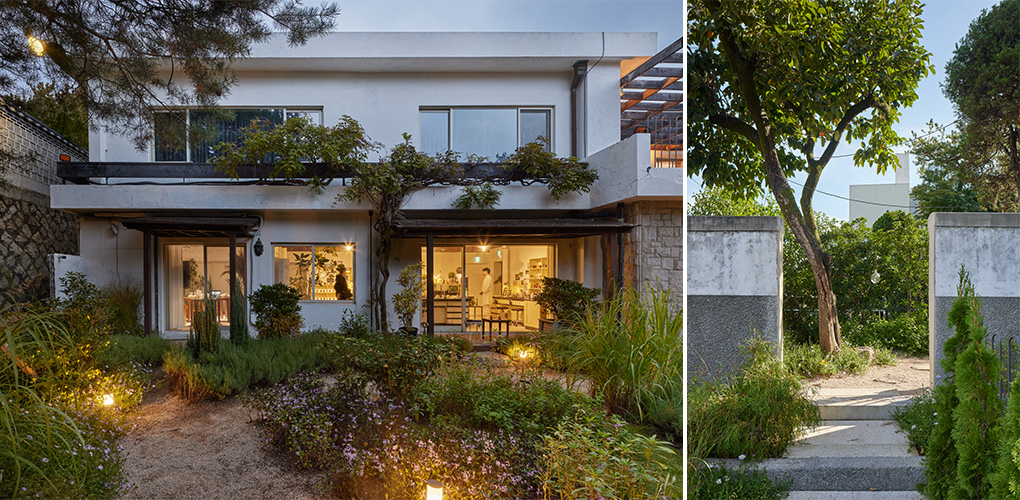
However, planning ‘what kind’ of exhibition initially felt heavy. How could we make it uniquely Story A? How could we offer the ‘world's best’ fragrance experience? How could we meet the high expectations of niche perfume enthusiasts? Then, we discovered that our Yongin Research Institute had a collection of fragrances ‘captured from materials indigenous to Korean regions.’ This intriguing realization liberated us from the pressure to present ‘the best.’ We decided to showcase a ‘different’ kind of fragrance, a story that was uniquely ours.
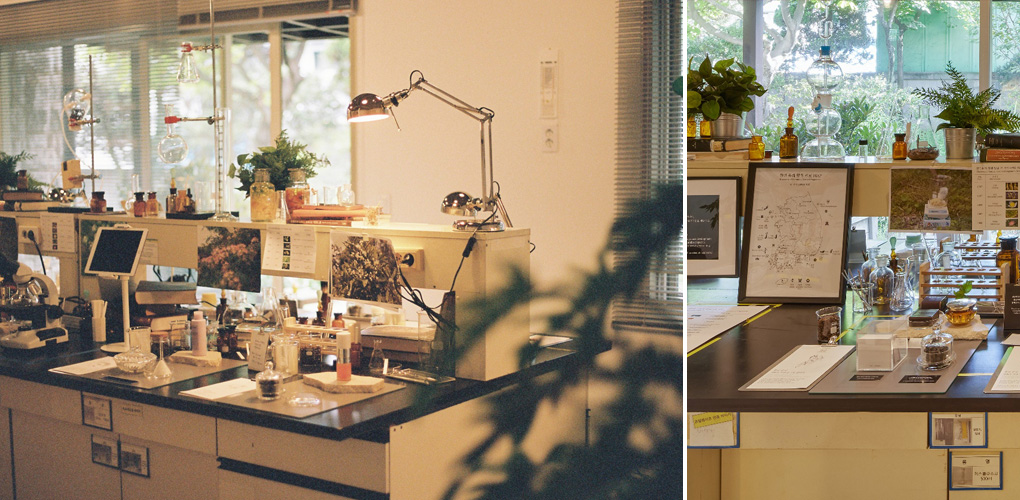
Korean, Ours, Amorepacific's
Typically, when we think of ‘fragrance,’ we think of foreign products and famous international perfumeries. The fact that we had been exploring and identifying fragrances from various Korean regions for a long time was fascinating to us. Furthermore, the growing public interest in ‘Korean’ and ‘our own’ things suggested that our audience would find this intriguing. These fragrances, distinct from typical perfumes, could be presented in their purest form. We prepared for visitors to sample these scents and take home scent strips in plastic bags, displaying our products incorporating each fragrance. Indeed, visitors showed great interest in capturing fragrances from Korean locales.
This concept was also reflected in the plant art at the entrance. While plant art was used as an eye-catching photo spot, it also encapsulated the theme of discovering local fragrance materials. The plants used in the plant art, such as Smoothlip Cymbidium, camellias, ginseng flower, Albizia julibrissin, and mugwort, were all fragrant materials sourced from Korea.
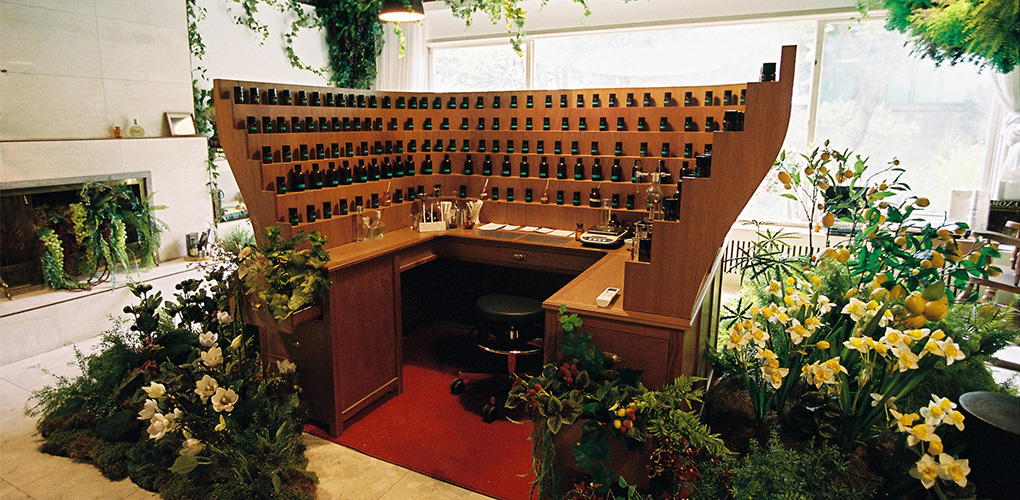
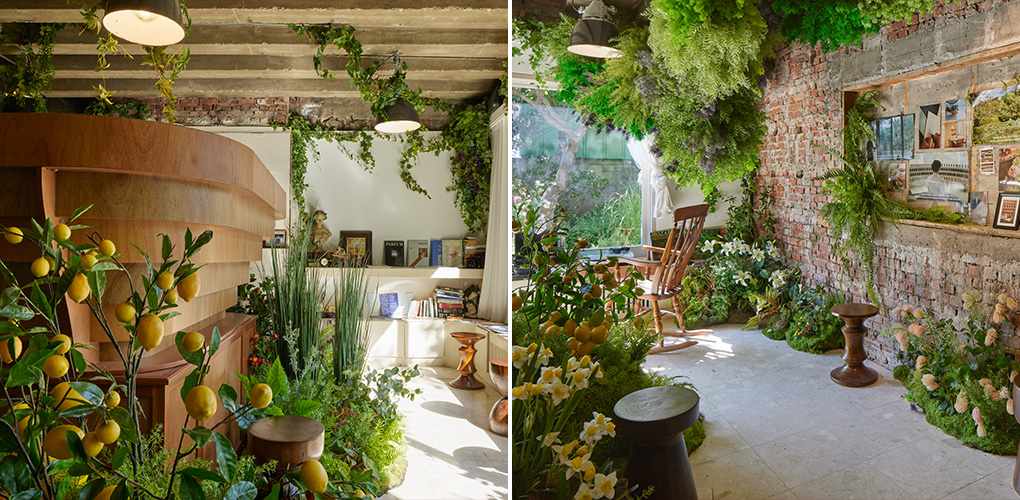
Moreover, we discussed our research on ‘fragrances for cosmetics.’ Studying fragrance revealed many considerations, like the scent of skincare, wash-off types like body washes, and how fragrances change depending on the base of the formulation. While fragrance is commonly associated with perfume, our company has a long history of researching fragrances for cosmetics. The theme ‘fragrance for cosmetics’ was unique and, we believed, would feel fresh and new to our audience. To enrich this content, we produced interview videos with former and current Amorepacific perfumers, sharing vivid stories of the past and present of perfumery.
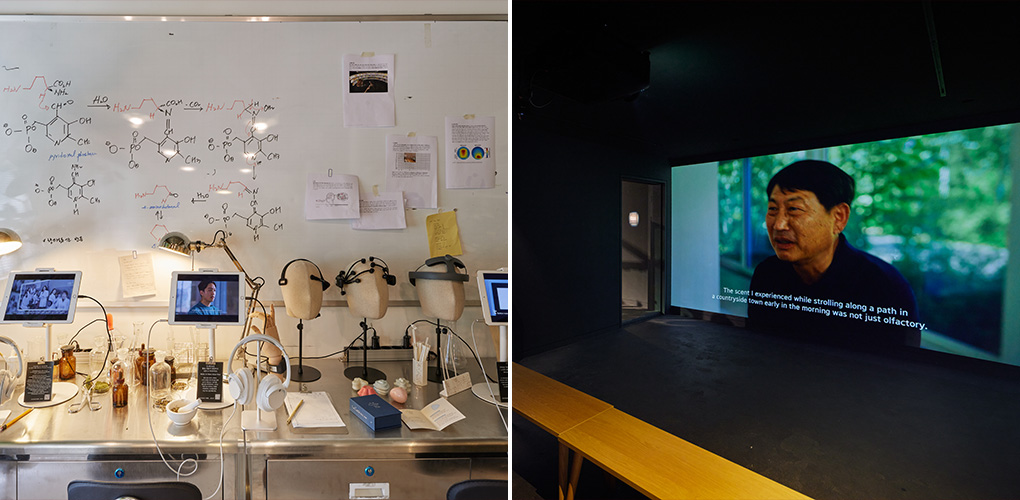
The Importance of Heritage and Archiving
While preparing this exhibition, we felt deeply grateful for our company's heritage and archiving assets. We realized that no matter how much we desired to create a unique exhibit, the depth would inevitably be shallow without something substantial to present. Throughout the exhibition, visitors' responses and reviews often expressed surprise: “I never knew Amorepacfic was so serious about fragrance,” “I didn't realize they had been researching it for so long,” “I just learned they made perfumes in the past,” and “I didn't know this product at home was from Amorepacfic.” It was enlightening to see that we could reshape people's perception of our company by recontextualizing what we already had.
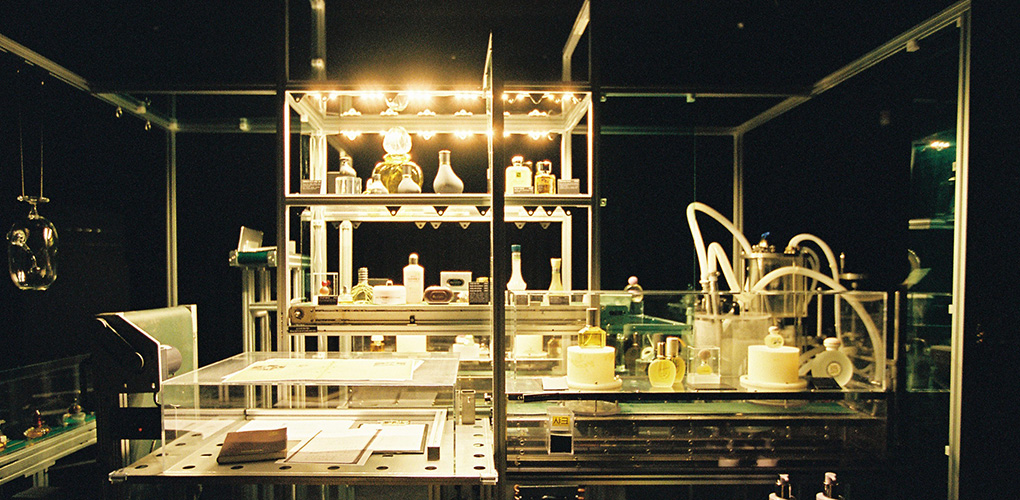
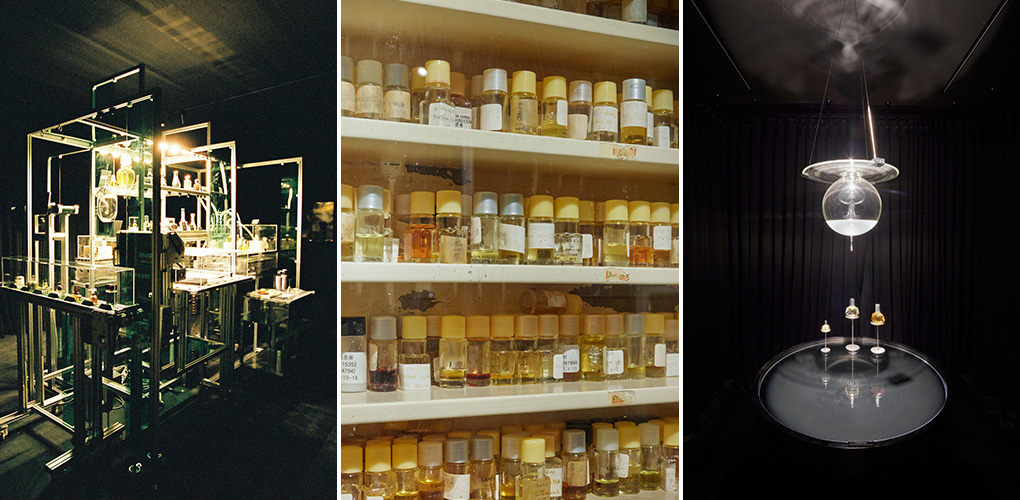
The large perfume organ, prominently positioned as one first enters the exhibition, was inspired by a photograph from the 1950s-60s of an Amorepacfic perfumer at work. Thanks to well-preserved images in the Osan archives, we faithfully recreated the perfume organ, thus paying homage to our heritage.
The furniture and equipment we used in the exhibition were sourced mainly from the Osan archives, closed stores, or discarded items from the Jincheon factory. While budget was a consideration, we wanted to showcase the original purpose of these items and the marks of time upon them. Visitors recognized the heritage imbued in these details; the space looked as if it had been directly transported from the past. Over half of the videos we broadcasted throughout the exhibition were repurposed from existing Amorepacfic YouTube channel content. Dried flowers and illustrations from the Osan Botanical Garden also served as decorative elements.
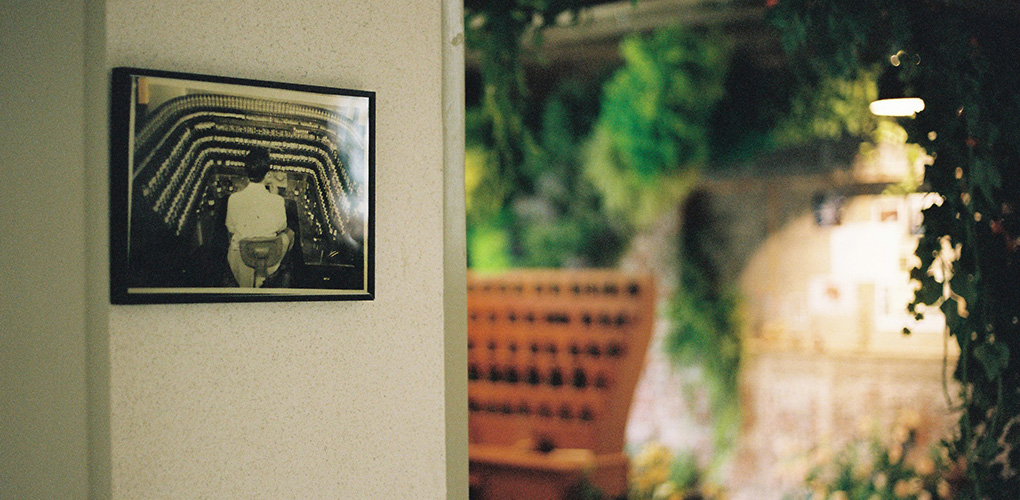
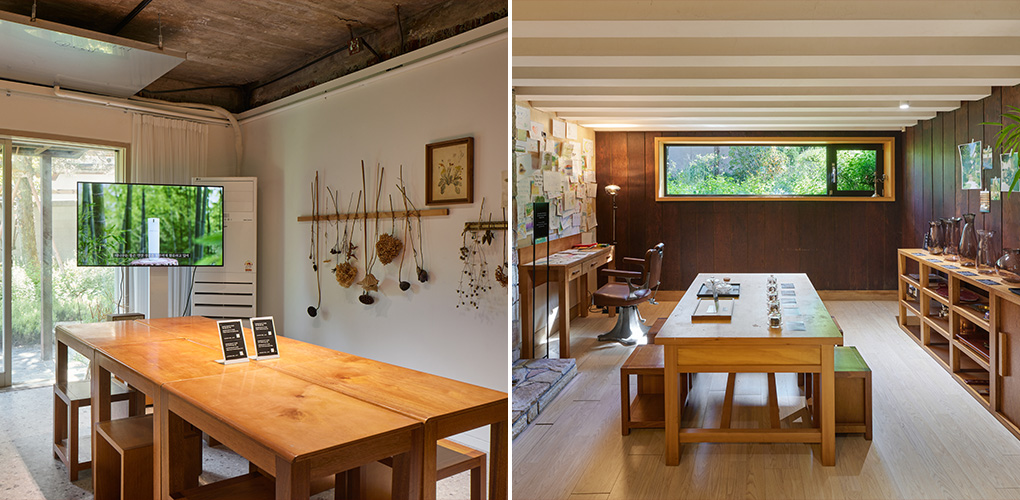
Creating a Space for Fragrance Exhibit
Fragrance, they say, connects directly to the brain more than any other sense. We hoped that visitors would remember this exhibition through its scents. We developed five commemorative fragrances in the fragrance Lab, allowing visitors to choose their favorite scent to keep as a souvenir. The fragrances included Bukchon, Garden, Perfume Organ, and two reinterpretations of past scents. Surprisingly, these were more popular with our customers than we had anticipated. We also offered blending experiences and fragrance postcards as ways for visitors to remember their experiences.
The second-floor archive was more than just a display of old Amorepacfic perfumes; we wanted it to embody the essence of a ‘fragrance exhibition.’ We had the fragrance Lab recreate scents of discontinued products for visitors to experience, allowing them to discover new scents or reminisce about past fragrances. Unused machines and equipment were arranged to create an environment that resembled a perfume production facility.
In the store, we curated products characterized by their scents, disregarding brands and types and instead categorizing them based on fragrance notes like woody, musky, floral, and greenery.
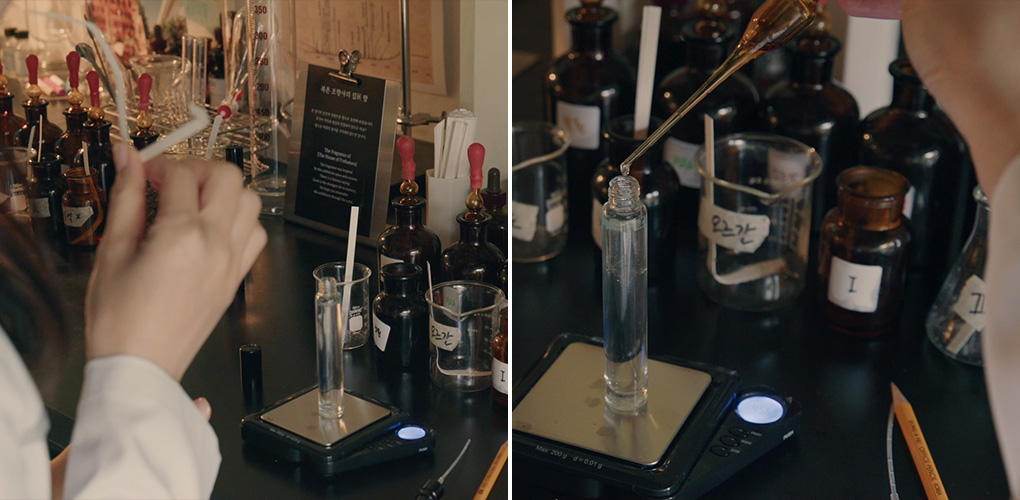
The Power of Collaboration
Lastly, and most importantly, was the ‘power of collaboration.’ This aspect was consistently felt and appreciated throughout the exhibition preparation.
Firstly, the researchers from the Fragrance Lab played a pivotal role, willingly assisting in developing exhibition scents, restoring old fragrances, participating in videos and interviews, and developing and conducting class programs. The museum actively introduced and shared its archival assets, lending them for the exhibition. Over 20 teams and brands cooperated, enabling us to use a beautiful Western-style house for the exhibit, create a stunning garden, develop and conduct classes, and receive product sponsorships. Considering the exhibition's focus on fragrance, the participation of Goutal, our company's sole imported perfume brand, added significant value to the event.
This was a time for us to feel the synergy of company-wide collaboration. It reinforced the notion that nothing is achievable alone, and it seemed the visitors recognized the power of this synergy, too. We received collaboration proposals from various organizations and companies during the exhibition, with plans to showcase the exhibition in other regions. We hope this contributes positively to Amorepacfic's image in the world of fragrance.
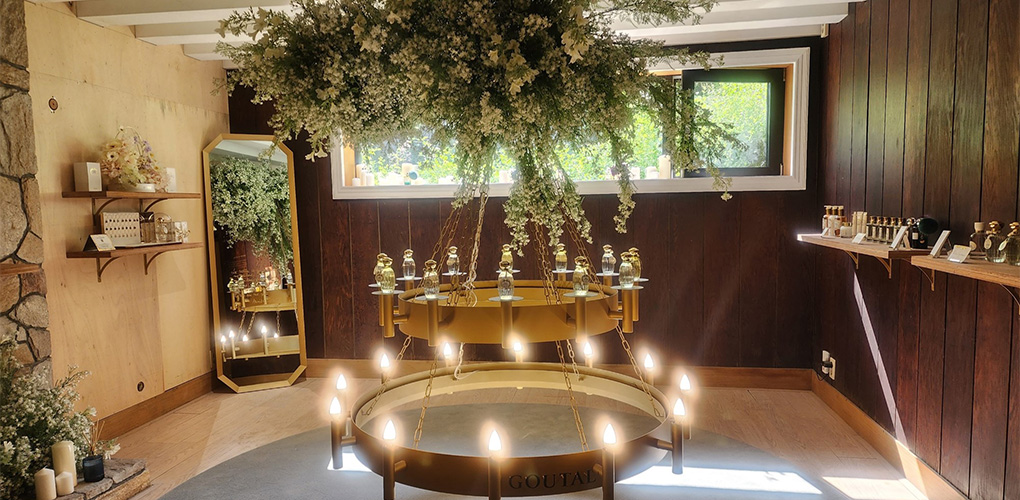
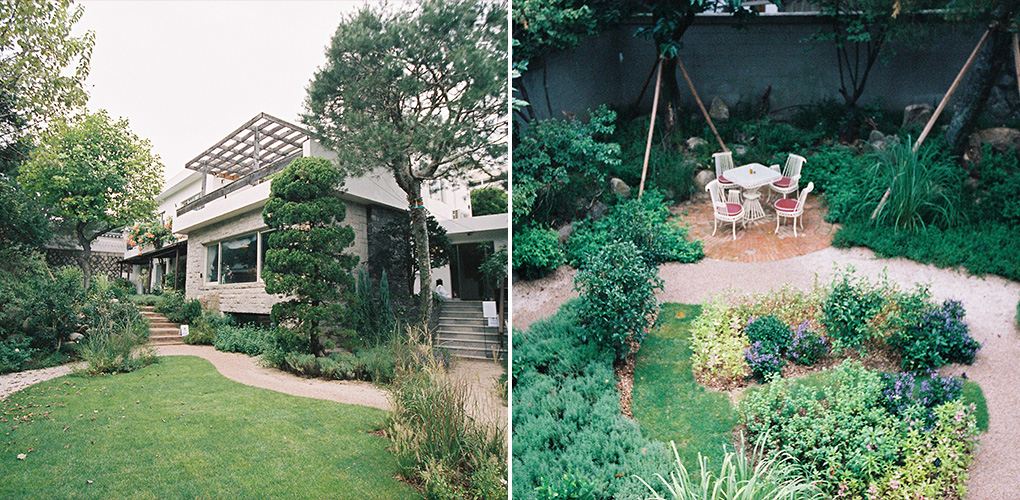
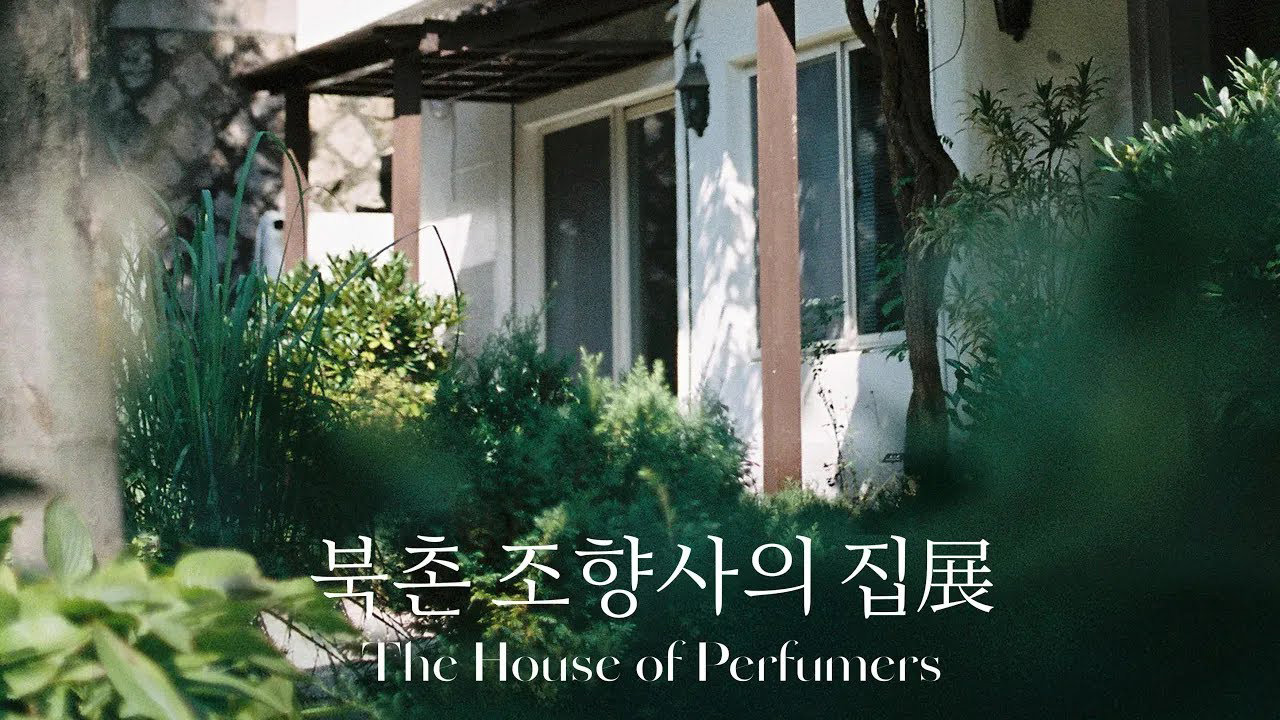
-
Like
2 -
Recommend
0 -
Thumbs up
1 -
Supporting
1 -
Want follow-up article
0




